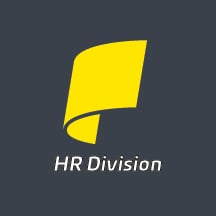How much do you make? Shhh…that’s a secret. There are certain topics you shouldn’t discuss in the workplace – and pay is one that tops the list. And while it may be a long-held cultural taboo to discuss compensation, the battle for equal pay continues.
In 1993, Whole Foods was one of the first companies to take the secrecy out of compensation by making salaries available to all employees. It was a move that upended business as usual and as a result, prompted more discussion about wage equality and pay transparency.
TOP 5 FACTORS OF EQUAL PAY
Secret pay practices have been around for centuries. As the face of America’s workforce changed, laws like the Equal Pay Act were created to protect wage discrimination in the workplace. Signed by President Kennedy in 1963, the Equal Pay Act requires equal pay for equal work. Equal pay includes all forms of compensation, such as salary, bonuses, overtime, profit sharing, stock options, life insurance, paid vacation and holidays, and travel reimbursements. Skill, effort, responsibility, and working conditions, all must be the same and performed within the same establishment. Factors for equal pay include:

Experience, Ability, Education, and Training. The issue is what skills are required for the job, not the skills the employee may have. For example, two administrative jobs could be considered equal even if one of the employees has a masters degree.
Working Conditions. This includes the hazards of the job and the physical surroundings, such as temperature and ventilation.
Physical or Mental Effort Required. For example, suppose that both men and women are working side-by-side on an assembly line. An additional employee, at the end of the line, has to lift and move the product to another area in order to complete the work. Because this job requires more effort, it would not be a violation to pay that person more, regardless of gender.
Level of Responsibility Required. A sales professional who is responsible for customer checks has more responsibility than others on the team would justify a pay differential. An employee responsible for turning off the lights at the end of the day would not.
Physical Location. Equal pay applies to jobs performed in an establishment, which the Equal Pay Act defines as a distinct physical place of business, rather than a business with several places of business. In certain circumstances, separate physical locations may be treated as one establishment. For example, if a division of a company hires employees, determines compensation, and assigns the employees to a separate work location, the separate work location is considered as one establishment.
TRADE-OFFS
In the 30 years since Whole Foods made its bold move for pay transparency, other companies have been slow to follow. Why? The primary reason most companies shy away from pay transparency is fear. Fear of change and fear of revealing wage inequities. After all, fair business practices do not hide in the dark, but unfair practices, like discrimination, do. Additional reasons include:
Potential Costs. Transparency may result in increased costs, such as salary adjustments in order to bring current employees in line.
Competition Attracting Top Talent. Employers worry that revealing salaries would give the competition an edge to lure their best employees with more attractive offers linked to reward-based compensation.
Justifying Salary Structures. Employers would have to develop or justify their company’s salary structures.
Changes in Employee Behavior. Making salaries open to employees could potentially change employee behavior, such as decreased productivity and resignations.
Shifts from Performance to Pay Comparisons. Transparency creates an opportunity for employees to compare themselves with other employees versus focusing on elevating performance.
BENEFITS OF PAY TRANSPARENCY
 Companies with more transparent compensation policies have reported the following benefits:
Companies with more transparent compensation policies have reported the following benefits:
Attracts Better Candidates. Many companies who practice pay transparency see an increase in applicants with like values who better fit the company’s culture.
Creates Trust & Motivates Employees. By eliminating secrets, transparency creates an environment of trust and promotes healthy competition.
Reduces Gender Pay Inequities. Being open ensures fairness. For example, every position in the federal government has a fixed level, with an assigned pay level. An open salary tier system helps to reduce gender pay inequities.
Reinforces Employee Value. A business has the opportunity to educate employees about salary structures, benefits packages, and to reinforce an employee’s efforts and talents needed for the company’s success.
WHAT YOU CAN DO

Start Small. Start the process by introducing the framework of a pay scale so everyone understands the new pay structure.
Assess Current Pay Policies. Review your current performance review and promotion structure and balance out disparities.
Consider a Salary Formula. In 2013, CEO of tech company Buffer listed the salaries of employees on the company’s website, including his own. In addition, the CEO also provided the formula used to determine compensation, which was based on the experience, the job position, company loyalty, and stock options.
Outsource Roles. Outsource activities where competition is a key result. Here, both performance and reward have to be transparent.
IS PAY TRANSPARENCY RIGHT FOR YOUR BUSINESS?
Pay transparency is not an easy decision. And secret or not, the issue is not going away. Being more transparent about compensation doesn’t mean immediately posting employee salaries. But it does mean having clearly defined compensation practices and policies in place.










